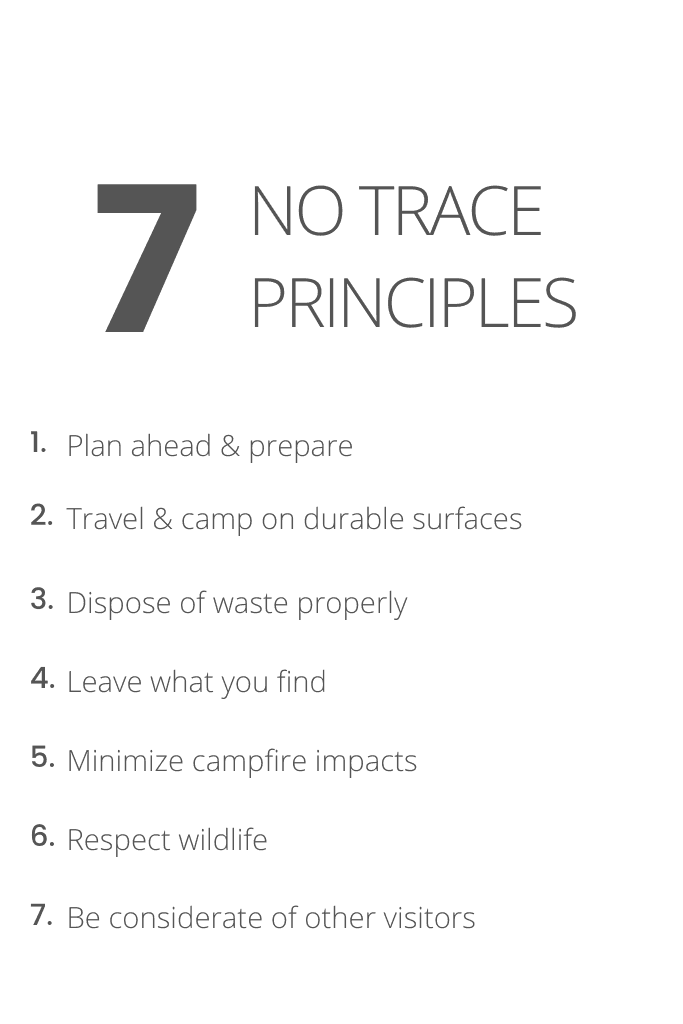Consumerism – the evil of all evils. At least, from a certain perspective. Indeed we’re dealing with some strange, scary times in which we are numbers, not people. We are looked at as market puppets controlled by fat cats that want our money. Sadly, they are taking away not only our money but also our planet’s and our health.
It has all come to this: we’re now targets of strategies that implement in our minds a virtual need to buy, to consume, so we can achieve happiness. Life has become all about satisfaction in possessions rather than in life itself. The products we feel like we have to buy are made through questionable methods within questionable industries. This process is wrecking both the planet and its living beings – all in the name of money.
Table of Contents
Advertisement

This late stage of the capitalist system we’re currently facing is an expert on consumerism. Every minute we are bombarded with ads and brand exposures. If in the 70s we were exposed to 500 ads per day, today we have surpassed 5000 per day. By getting up and looking at your phone, you’re already being a brand target – and you just opened your eyes.
SJ Insights presents this in a rather interesting manner. Although it’s dated 2014, which only means the numbers have gone higher, it’s useful in the sense that allows us to understand the degree to which we are surrounded by ads all day, every day:
- Average number of advertisement and brand exposures per day per person: 5,000+
- Average number of “ads only” exposures per day: 362
- Average number of “ads only” noted per day: 153
- Average number of “ads only” that we have some awareness of per day: 86
- Average number of “ads only” that made an impression (engagement): 12
SJ Insights divides into categories: advertisements plus brand exposures (this includes walking by labels in grocery stores or looking at shampoo bottles in the shower); ads only exposures (the ads you’re exposed to but pay no attention); the ads only noted (the ads you acknowledge, but do not affect you); the adds only you have some awareness of per day (the ads you notice); and the ads only that made an impression (the ads that might mean something to you).
Some marketing researchers state that currently we are exposed to between 4,000 and 20,000 ads per day. StopAd alone blocks 200 ads per day for every user.
Yet, saying that the markets are saturated is an understatement. Products are being made at an exceedingly rapid pace, meaning that overexposing people to ads is not enough anymore. Marketers have to try and make better ads to convince people to buy more and preferably their products. The big issue with this is that it has been leading us to more mindless buying.
Marketing companies and ad creators don’t just show the product, they try to create a connection between you and the product. As Marshall McLuhan said in his book Understanding the Media, “the continuous pressure is to create ads more and more in the image of audience motives and desires”
Advertising and mass media professor Jib Fowles has addressed in his paper “Advertising’s Fifteen Basic Appeals” how ad creators seduce us – it’s through emotion. The emotional appeal behind ads is supposed to find their way into our minds and make us believe we need their product for some personal reason. Fowles divides the emotional appeal into 15 different categories:
- The need for sex
- The need for affiliation
- The need to nurture
- The need for guidance
- The need to aggress
- The need to achieve
- The need to dominate
- The need for prominence
- The need for attention
- The need for autonomy
- The need to escape
- The need to feel safe
- The need for aesthetic sensations
- The need to satisfy curiosity
- Physiological needs: food, drink, sleep, etc.
Each of these categories speaks to us in a quite personal realm because they aim towards flaws, basic needs, and temptations.
These ever-evolving techniques are driving people into buying more clutter, more stuff they end up never even using – the type of junk that ends up in a random drawer for years. The negative impact of consumerism is hitting all-time highs and it’s imperative to swim against the current.
Environmental Impact of Consumerism
Fast fashion

Fast fashion is a business model that relies on mass production, low prices and large volumes of sales. It’s based on knocking off styles from high-end fashion shows and delivering them in a short time at cheap prices, typically using lower-quality materials.
Fast fashion is one of the biggest problems our conscientious society faces today. Cheaper clothes come at an environmental cost. The 2019’s European Union’s report on the environmental impact of the textile and clothing industry states the amount the clothes bought in the EU person has increased 40% in just a few decades because of fast fashion. This increase in consumption results in more waste, more water pollution due to microplastic and chemicals, and more air pollution due to transportation.
Once discarded, over half the garments are not recycled, but end up in mixed household waste and are subsequently sent to incinerators or landfill.
Solutions at our reach
- Buy fewer clothes
- Wash clothes less
- Reduce the wash temperature
- Air dry clothes
Food industries

Food makes a third of the United Nations’ quite important nexus to sustainable development. The need for food increases as the population grows, but the current methods aren’t the most adequate considering the demand.
Food production is one of the main contributors to climate change – the industry is responsible for one-quarter of the world’s greenhouse gas emissions.
Food production accounts for over a quarter (26%) of global greenhouse gas emissions. It takes over half of the world’s habitable land, it takes up a lot of water and pollutes a lot of waterways as well, and it is stealing natural habitats from several species.
Animals raised for meat, dairy, eggs and seafood production (livestock) account for a fair share of emissions as well. Cattle produce methane naturally through their digestive processes and fishing vessels consume a lot of fuel.
By controlling food industries, we can reduce water stress, pollution, restore lands to forests or grasslands, and protecting wildlife. (1)
Solutions at our reach
- Eat less meat and fish
- Reduce food waste
Tourism
Tourisms as a whole and some of the actions by tourists have over time adversely affected both the environment and specific destination areas. It’s a key contributor to greenhouse gases released into the atmosphere as a result of the combustion of natural gases and fossil fuels.
From air traffic to litter and leaving behind garbage or waste like plastic wrappers and cigarette butts in the surrounding environment, tourism has become one of the main causes of land pollution, plastic pollution, and cigarette pollution.
Tourism has also been associated with water pollution and destruction of marine life due to recreational boating activities such as cruise ships and boat rides in rivers; land degradation due to hiking activities; noise pollution due to great use of cars, buses, airplanes, and recreational vehicles that disrupts natural life; and air pollution mainly due to air traffic, since tourism makes up to more than 60% of all air travels because of low-cost air companies. (2)
It’s also appropriate to relate tourism to food waste. The emergence of restaurants has grown alongside tourism levels. The competitive spirit among restaurants leads to extensive menu choices, which leads to overbuying, overproduction and, consequently, spoilage.
Locally, the high number of tourists visiting the same area and the constant and exaggerated construction of resorts, hotels, and other types of recreational places puts a strain on those areas.
It’s important to highlight that a part of the negative impact of tourism comes from some tourists’ reckless behavior. The page Our Public Lands Hate You can both give you some perspective on how some tourists damage the environment by not behaving thoughtlessly and teach you valuable things on how to behave accordingly.
Nonetheless, it’s important to make choices when it comes to travel, even if that choice is to skip that one flight.
Solutions at our reach
- Reduce air travels
- Reduce travels altogether
- Respect the 7 No Trace Principles
- Avoid recreational vehicles
- Choose restaurants carefully

And then there was Minimalism…
During the last several years, a fast-growing interest in minimalist has been observed among people around the world. Considering the invasive techniques behind the advertisement machine and the degradation of natural resources, many of them seek an escape, a shift to inner values, and a desire for more simplicity. More people are changing their buying behavior into a more minimalistic one, and thus more sustainable. Mindful consumption is part of the paradigm shift that is taking place.
But how do Minimalism and sustainability relate?
What is sustainability?
First, it’s important to understand what sustainability means.
Sustainability is, in short, the avoidance of the depletion of natural resources to maintain ecological balance. It’s a concept that regards the preservation of the planet by investing in renewable fuel sources, reduction of carbon emissions, protection of environments, and maintenance of delicate ecosystems’ balance. Essentially, protection is its keywords, for it looks to protect nature and human and ecological health.
According to a Permaculture Research Institute’s article on sustainability, the concept is grounded on three pillars: Environmental Protection, Social Development, and Economic Development.
Environmental Protection
One of sustainability’s most important goals is precisely to protect the environment by managing resources and finding alternatives. The point is to reduce negative human impact on ecosystems.
Social Development
Spreading the definition and importance of sustainability among people is an important step towards creating a sustainable world. People only care about what they can understand so they must know that their quality of life – including their health – depends greatly on sustainability.
Economic Development
Economic development is important because sustainability needs investment, or economic resources, to succeed.
Moreover, to achieve the above-mentioned goals, sustainability is innovation-driven. To stop the mechanisms and behavior that compromise our planet and quality of life, sustainability “attempts to bridge social science with civic engineering and environmental science with the technology of the future.”
Why is sustainability important?
Sustainability is our most valuable philosophy if we want to maintain our quality of life while preserving the Earth’s ecosystems. The way we are living now is far from sustainable because we rely too much on resources that aren’t renewable nor sustainable. Our way of going by is damaging the environment on which we depend entirely. Sustainability, as a protection and innovation tool, is the answer to preserving the planet and living our best lives.
How do Minimalism and sustainability relate?
The minimalist lifestyle helps you reflect on your consuming habits. Although Minimalism comes into people’s lives for several different reasons, the lifestyle usually draws the attention of those who seek a change because they are looking for a more conscientious and mindful way of living, disconnected from materialism and consumerism, and of those who want to reduce their negative impact on the environment. There is, in fact, a – let’s say – breach of Minimalism that focuses precisely on the environmental preservation through reduction of consumption: the Green Minimalists (by Susticy).
Green Minimalists
Green Minimalists are very much like “regular” minimalists: they live simply and as free of waste as they can, but their focus is on living sustainably rather than seeking inner peace through depletion of clutter.
Susticity provides a guide on how to become a green minimalist. This shift will give you the freedom to spend more time doing what you love with people who matter to you, sustainably.
The guide goes as follows:
- Value experiences rather than goods
- Clear out clutter
- Quality over quantity
- Dispose of what you don’t use
- Donate what you don’t use
- Appreciate Nature daily
- Buy local, seasonal foods
- Support local business
- Eat less meat
- Replace single-use plastic
So how does Minimalism contribute to Sustainability?

Transitioning to Minimalism means you’re going to ask questions about what you’re about to consume:
- Do you need it or do you want it?
- Why do you need or want it?
- Is it something you’re going to get rid of soon?
- Is it worth your money?
- Where does it come from?
- What is it made of?
The questions Minimalism raises are extremely important because they’re your first step towards contributing to the sustainability process. Less is more, and in our current climate crisis, less production means more quality of life.
Minimalism focuses more on your needs and less on your wants by re-channeling your priorities towards your relationships, life experiences and endeavors, and away from unfulfilling and unsustainable patterns of consumption that come with the system in which we’re embedded. It is a lifestyle meant to provide you more happiness and mindfulness as far away from materialism as possible.
By being the antithesis of consumerism, Minimalism is the closest we can get to contribute to sustainable living. With minimalists, there is less production, less consumerism, and more awareness.
Minimalism and tourism
Because Minimalism is a lifestyle that focuses on experiences, it’s commonly associated with tourism. Minimalists, by not spending their money on clutter, spend it on experiences, and a lot of the times these experiences are traveling. As we’ve seen previously, traveling intensively isn’t exactly ideal for sustainability. This type of mainstream Minimalism is an individual approach to the concept of Minimalism. The approach we’re addressing here is the eco-friendly one, in which traveling is a decision made carefully, considering how Minimalism affects the environment.
Final notes
The point of relating Minimalism with sustainability isn’t to change drastically and limit each one’s conduct. Extreme minimalism isn’t the aim of this article, nor do we believe extreme Minimalism could be an answer to this problematic.
As a minimalist, you’re still going to buy things and travel. Nonetheless, the idea is to be mindful. As a minimalist, you’re supposed to buy only what you need and what’s as useful now as it’s going to be in five years. As a green minimalist, you have to be especially careful when you buy something, as you have to keep an eye on if what you’re purchasing is within sustainable patterns or not; you’re also more attentive to your traveling habits, as they need to be as sustainable as possible as well.
The bottom line is that Minimalism, even if not Green Minimalism, is closely linked to sustainability because it’s grounded on consuming less. Less consumption leads to a decrease in production and less degradation of natural resources. Green Minimalists, being more devoted to the environmental cause, are more conscientious and thus their practices are even more sustainable because they’re thought over. Minimalism can thus be acknowledged as a tool to stop the harm that is being done to the planet and maybe even invert what’s been done so far.
Cover photo by Mustafa Evirgen.


